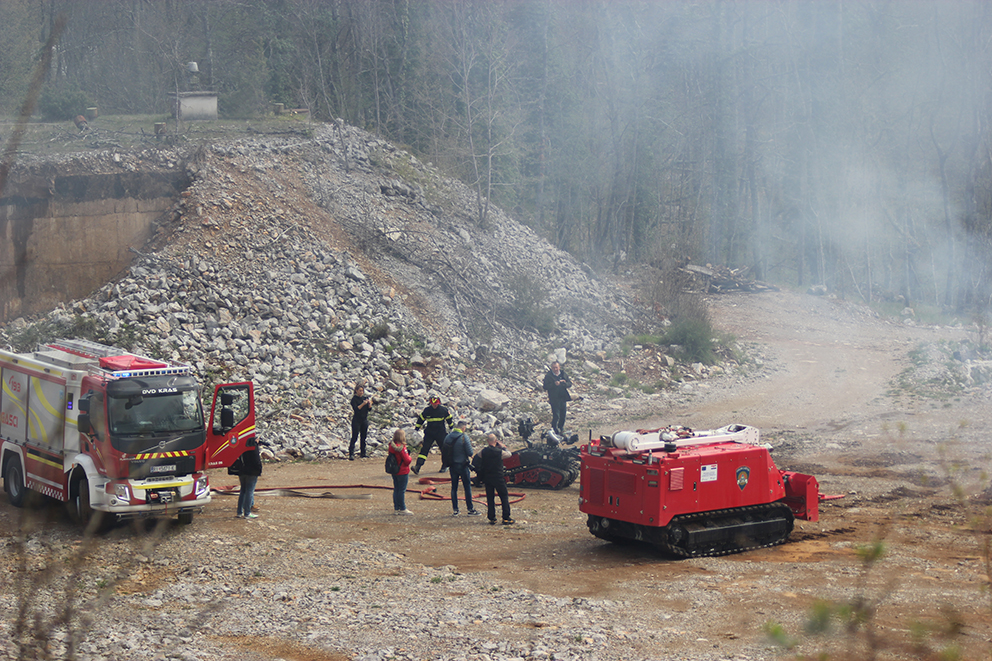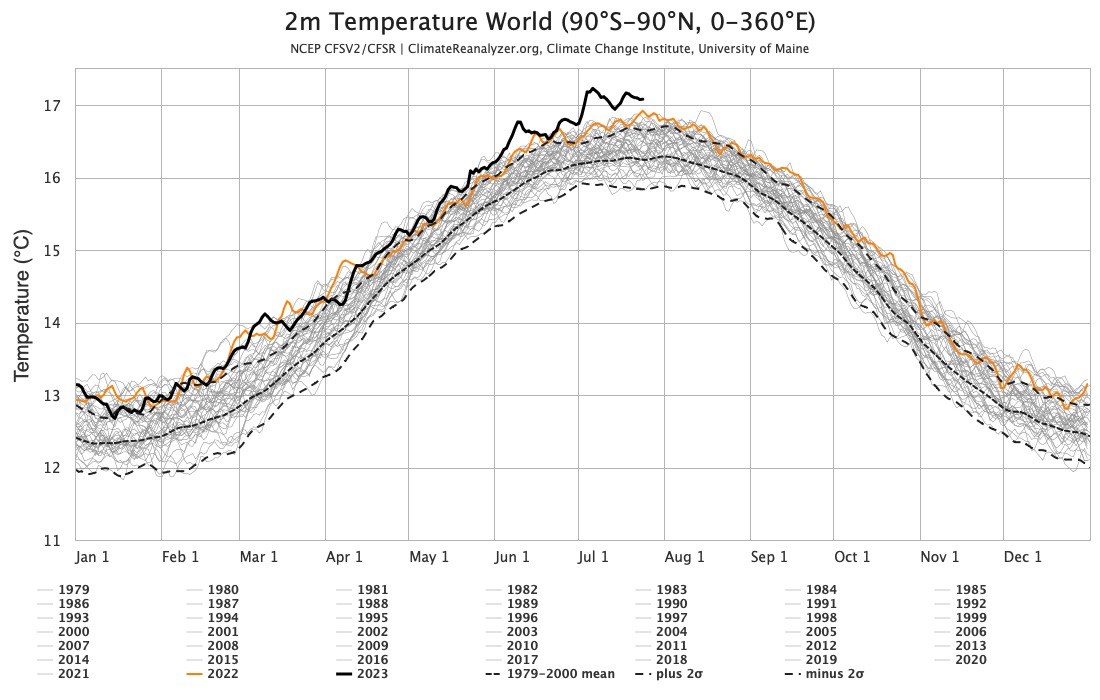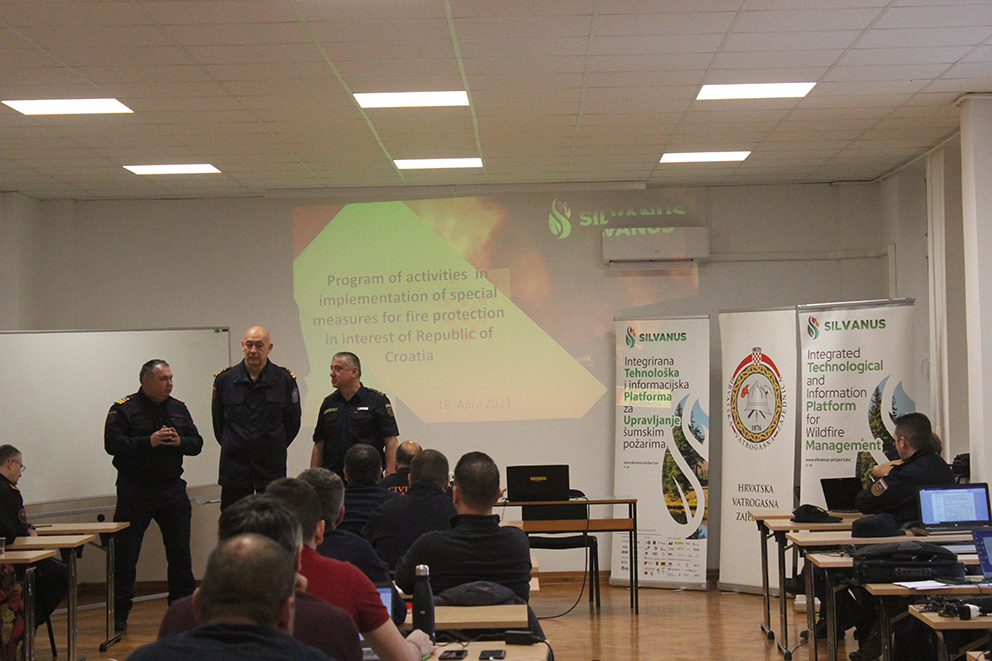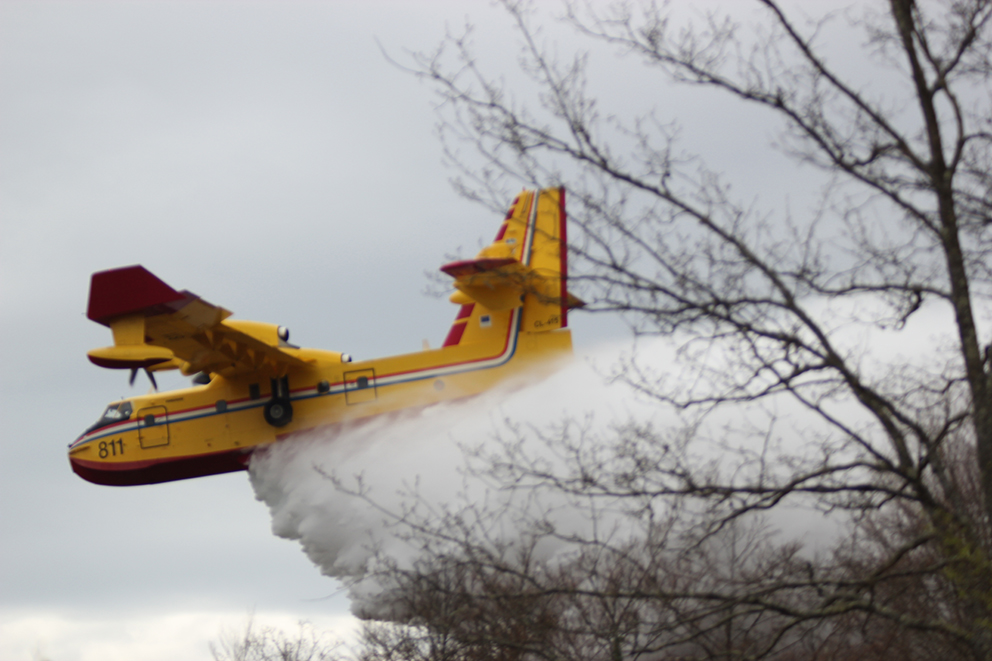
Croatian firefighters during an exercise (photo courtesy of the Croatian Association of Firefighters)
Among the effects of climate change are so-called extreme wildfires. In Croatia, large fires in open spaces present a particular problem. We met with the Croatian Association of Firefighters to find out how they are facing up to new challenges
The first week of July was, according to the World Meteorological Organization , the hottest ever recorded. This startling fact is just the latest of many signs of the planet's overheating, whose consequences are affecting us ever more directly. In a recent statement , United Nations secretary-general António Guterres said that climate change is taking us into "unexplored territories of destruction", and that each of us must somehow begin preparing. Almost 160 years after its founding, the Croatian Association of Firefighters (Hrvatska Vatrogasna Zajednica, HVZ) is getting ready for this uncertain future in a region that is particularly sensitive to rising temperatures. We interviewed Joško Grančić, assistant chief of the association for the Croatian coast.
Source: https://climatereanalyzer.org/clim/t2_daily/
How is climate change viewed by Croatian firefighters? What are your main concerns and the challenges you are facing?
Last year we had a very hot and dry summer season,. The average temperature, for example, was higher than previous years, while rainfall decreased. But data clearly tells us that our everyday life will be increasingly affected by the effects of climate change.
In Croatia, one of the main problems is big fires in open spaces. These are mainly caused by weather conditions. In seasons with long dry periods and strong winds, an increase in the number of fires is inevitable. This was the case in 2017 and 2022.
But even rain does not always play in our favour. This year, thanks to favourable weather conditions, the number of fires has been lower so far. However, the vegetation, which was lush in the spring, turns into a mass of highly flammable material after the first heat waves. This means that, in the event of a fire, not only will the flames be more difficult to tame, but they will burn larger stretches of land more quickly. This can lead to what are now known as extreme wildfires.
To face this challenge, there are plans to build 600 km of firefighting roads along the coast in the coming years. In the meantime, video surveillance cameras continue to be installed. Their role is to report fires, monitor their spread and check whether they are properly extinguished.
Probably the most important task, though, is the stepping up of preventive measures at all levels. This includes raising the awareness of local people.
In addition to fire prevention and management, are there other natural disasters related to climate change where your services are required?
Yes, unfortunately fires are not the only environmental disasters that fall upon the fire brigade. Droughts, for example, mean the need to transport drinking water, which is largely done by the fire brigade. Sudden and heavy rainfall is also a big problem. This year, Croatia has suffered severe flooding due to storms, which means more rescues, more removals of trees from roads, and so on.
To face all these challenges, how are Croatian firefighters getting equipped and organised?
The Croatian Association of Firefighters acts as the central state agency for firefighting. The association has numerous intermediate organisations, such as municipal firefighting associations. It has 124,927 individual members, who include children, young people, veterans, and honorary members. There are 34,662 operational firefighters, of whom 31,621 are volunteers and 3,041 are professionals.
The high number of volunteer firefighters might come as a surprise. In Croatia, this fact can be attributed to a long firefighting tradition. Next year is the 160th anniversary of the country's first volunteer fire department, established in Varaždin [northern Croatia].
I think it is important to emphasise that these volunteers do not only fight fires. They also work with local young people, organise workshops and sports competitions, cultural and artistic events, and so on. In other words, they are the backbone of the social life of their villages and towns.
In addition to this long tradition, economics also plays a role. Professional firefighters are much more costly for local communities than volunteers (who nonetheless receive the same equipment as professionals).
What impact has Croatia's EU accession had on your activity?
Although EU membership has not had a great impact on the structure of the fire service, EU funds have made it significantly easier to purchase firefighting equipment and to build fire stations, especially in rural areas.
We have renewed many vehicles thanks to various government programmes and EU funds. In the last three years alone, 207 vans and pick-up trucks have been purchased by the Ministry of Agriculture and HVZ, while 91 firefighting vehicles were purchased with European funds by the Ministry of the Interior.
Even before joining the EU, Croatian firefighters maintained close links with colleagues from European countries. They exchanged experiences, carried out joint exercises and displays at competitions, and took part in industry gatherings.
Do European firefighters share equipment and/or know-how?
Yes. To boost the EU Civil Protection mechanism, the European Commission launched rescEU , which is a kind of reserve capacity for disaster intervention. The aim is to allow for quick responses in crises. Much attention has been paid to forest fires, which are already a problem in the Mediterranean and are gradually endangering the whole continent. The mechanism is financed by European funds. When a state is unable to respond to a fire or other incident on its own, it sends a request for help and the rescEU springs into action.
Croatia, for example, has five Canadair CL-415 aircraft and six AT-802 Air Tractor planes at its disposal. Of course, there are also ground firefighting forces in the rescEU system, and recently some of these were even deployed on large fires in Canada.
This material is published in the context of the "FIRE-RES" project co-funded by the European Union (EU). The EU is in no way responsible for the information or views expressed within the framework of the project. Responsibility for the contents lies solely with OBC Transeuropa. Go to the FIRE-RES page









